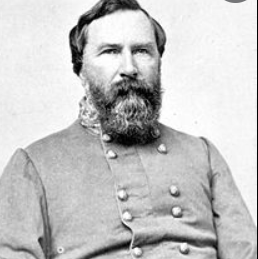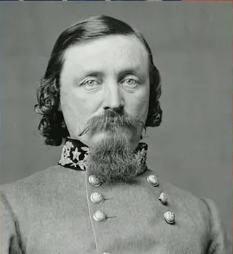The Battle of Gettysburg
- Abu Bakar Majeed Bin Abdul Rab
- Oct 22, 2022
- 3 min read
Updated: Oct 25, 2022
The American Civil War
Fought from 1861-1865, the American Civil War was a civil war fought between the Union (Northern States) and the Southern Confederacy, in the United States. The issue of slavery had always been the major cause of conflict between the North and the South, as the South supported slavery while the North opposed it, and this was the main driver behind the Civil War as well. The North and the South were in a major dispute over the extension of slavery into new western territories, which would have either resulted in new slave states or free states, which would mean the national abolishment of slavery.
“Four score and seven years ago our fathers brought forth on this continent, a new nation, conceived in Liberty, and dedicated to the proposition that all men are created equal”- Abraham Lincoln, The Gettysburg Address (1863)
The Great Battle
Arguably the greatest battle of the Civil War, the Battle of Gettysburg was fought from the the 1st to the 3rd of July, 1863. This battle is often termed as the turning point of the Civil War due to its scale, outcome and its timing which concurred with the Siege of Vicksburg: the final military action in the Civil War. The battle also involved the largest number of casualties in the civil war, with the estimate being around 51,112.
1 July, 1863
The battle officially began when Southern Confederate forces, under the command of Major General Henry Heth marched towards the town of Gettysburg with the goal of seizing supplies.
The Southern forces expected no resistance in their advance but were surprised by an engagement as they confronted a Union cavalry lead by Brigadier General John Buford. Buford's men managed to delay the Southern forces until infantry divisions of the Union, led by Major General John F. Reynolds arrived.
At this point, the battle was intense, with both sides fighting with full force. Major General Reynolds was killed in action and this then followed by Confederate reinforcements arriving on the scene, led by General A.P. Hill and General Richard Ewell. Around thirty thousand confederate troops overwhelmed twenty thousand union troops, forcing them to be on the backfoot and fall back through Gettysburg to the south of the town, where they fortified the cemetery hill.
2 July, 1863
On the second day of battle, both the armies had almost fully assembled. The Union forces assembled into a fish-hook formation, successfully defending a range of hills and ridges on the south of the town.
In the afternoon, the Confederates launched a full force assault, led by Lieutenant General James Longstreet. This assault started from the left flank of the Union formation. Following this, fierce fighting continued at different locations of the town including Devil's Den, Little Round Top, the Wheatfield, the Pearl Orchard and Cemetery Ridge. The Confederate forces closed in on the Union positions through this gradually.
As the Confederate forced advanced, Union reinforcements were quick to confront them, and these confrontations escalated into full scale battles on East Cemetery Hill and Culp's Hill.
Although the Southern forces' advance was successful and they gained ground, the Union forces' fish-hook formation proved to be advantageous for them as they did not crumble and held strong positions as night fell.
3 July, 1863
The third and final day of the battle started off by a disastrous miscalculation by the Confederate forces. Believing that they have demoralised the Union forces, the Confederates try to capitalise on their gains by launching more full scale attacks on the Union line. Union forces retaliated effectively, trying to recapture the ground that they had lost as heavy fighting continued at Culp's Hill.
The main turning point of the battle took when 12,500 Confederate troops, led by Lieutenant General Longstreet launched an assault against the centre of the Union position on Cemetery Ridge. Half of these troops were constituted by the Virginia infantry division of Brigadier General George E. Pickett, who was ordered to advance his troops through farmland.
Unfortunately for the Confederates due to their lack of assessment and due to this operation being undermanned, only one Confederate brigade managed to reach the top of Cemetery Ridge during Pickett's charge. This was expectedly disastrous as it resulted in a large number of casualties (28,063 in total) and forced the Confederates to be on the backfoot as they were repulsed by Union artillery fire.
As a result, the Confederate forces withdrew from Gettysburg late during a rainy afternoon on the next day. This marked the victory of the Union forces and the end of the Battle of Gettysburg.
Summary
References
“Battle of Gettysburg.” Wikipedia, Wikimedia Foundation, 20 Oct. 2022, https://en.wikipedia.org/wiki/Battle_of_Gettysburg.
“Gettysburg.” American Battlefield Trust, https://www.battlefields.org/learn/civil-war/battles/gettysburg.
“William Penn.” Wikipedia, Wikimedia Foundation, 14 Oct. 2022, https://en.wikipedia.org/wiki/William_Penn.


















Comments